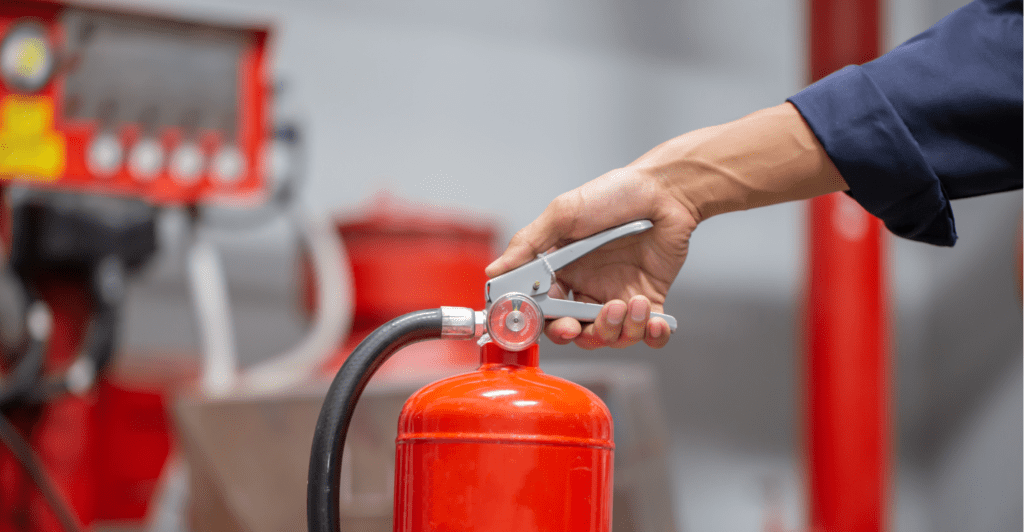
Fire safety is a crucial life skill, especially for children. Teaching kids about fire risks not only protects them but also empowers them to respond correctly in emergencies. Fires can be unpredictable and dangerous, but with the right education, children can learn how to prevent accidents and act swiftly in case of danger.
This blog will explore the key benefits of teaching fire safety to children, provide step-by-step guidance on implementing fire safety education effectively, address common concerns, and offer real-world examples to help reinforce the importance of this critical topic.
Why Is Fire Safety Education Important for Children?
Children are naturally curious, and fire can be fascinating for them. However, without proper guidance, this curiosity can lead to dangerous situations. Teaching fire safety to kids offers multiple benefits:
- Prevention of Fire Accidents – Understanding the risks associated with fire can help children avoid playing with matches, lighters, and other fire-starting tools.
- Confidence in Emergency Situations – Kids who are educated about fire hazards will know what to do if a fire occurs, reducing panic and increasing the chances of survival.
- Reduction of Property Damage – Early awareness and prevention can significantly reduce fire-related incidents at home and school.
- Lifelong Safety Habits – Learning fire safety at a young age helps instill responsible habits that last a lifetime.
- Protection for Others – Educated children can help their younger siblings, peers, and even adults respond appropriately in an emergency.
How to Teach Kids About Fire Safety
1. Start With the Basics: What Is Fire?
Explain to children what fire is, how it spreads, and why it is dangerous. Use simple language and age-appropriate examples. You can illustrate concepts with:
- Animated videos
- Hands-on experiments (like a candle and a jar to show how fire needs oxygen)
- Storytelling (narratives about how fire can be both helpful and harmful)
2. Teach the Dangers of Playing with Fire
Make it clear that lighters, matches, and stoves are not toys. Reinforce that fire can burn things quickly, cause serious injuries, and lead to uncontrollable situations.
Activity Idea:
- Show images or videos of fire accidents (age-appropriate) to emphasize the risks.
- Conduct a role-play session where children practice saying, “No! Fire is dangerous,” when offered a match or lighter.
3. Introduce Fire Prevention Rules
Teach children simple yet effective fire prevention tips:
- Never leave burning candles unattended.
- Do not overload electrical sockets.
- Keep flammable materials (papers, clothes) away from heat sources.
- Always turn off gas stoves when not in use.
Activity Idea:
- Create a checklist of fire safety rules and have kids stick it on the refrigerator or their study desk.
- Conduct a ‘Fire Safety Quiz’ to reinforce learning.
4. Practice the “Stop, Drop, and Roll” Technique
If a child’s clothing catches fire, they must:
- Stop running (running increases the flames).
- Drop to the ground immediately.
- Roll back and forth to extinguish the fire.
Activity Idea:
- Conduct a fun practice session where children role-play this technique.
5. Plan and Practice Fire Drills
A fire escape plan is crucial for homes and schools. Teach kids:
- How to identify escape routes.
- To never use elevators during a fire.
- The importance of staying low to avoid smoke inhalation.
- How to check doors for heat before opening them.
Activity Idea:
- Organize a mock fire drill where children follow an escape plan.
- Let them practice crawling under simulated smoke (using white sheets as ‘smoke’).
6. Teach Kids to Call Emergency Numbers
Ensure children know how to call 101 (fire emergency number in India). Teach them how to clearly state their address and describe the emergency.
Activity Idea:
- Have kids practice calling a mock emergency line with a teacher or parent playing the role of an operator.
- Create a ‘Fire Emergency Contact List’ and place it in an easily accessible spot at home.
7. Discuss Fire Safety at Different Locations
Fire risks are not limited to homes. Discuss:
- School Fire Safety: Importance of listening to teachers during fire drills.
- Public Places: How to find exit signs in malls, theaters, and other crowded places.
- Kitchen Safety: Never to touch stoves, hot pans, or electrical appliances.
Activity Idea:
- Visit a local fire station to let children see how firefighters work and learn firsthand about fire safety measures.
Addressing Common Concerns from Parents and Teachers
- “My child might get scared.”
- Approach fire safety in a calm and informative manner. Use engaging methods rather than fear-based tactics.
- “How often should I teach fire safety?”
- Fire safety education should be reinforced regularly, at least every six months.
- “What if my child forgets what to do?”
- Practice regularly through fire drills, role-playing, and reviewing safety rules at home.
- “How do I ensure my child does not panic during an emergency?”
- Repetition and practice help build confidence. The more children engage in safety exercises, the better prepared they will be.
Final Thoughts
Teaching fire safety to children is an investment in their safety and well-being. By making learning interactive, engaging, and regular, parents and teachers can equip children with the knowledge they need to prevent fires and respond effectively in emergencies. Fire safety education is not just about avoiding burns—it’s about fostering a culture of awareness, responsibility, and preparedness. Start today and ensure that the young minds of tomorrow are safe from fire-related hazards!
